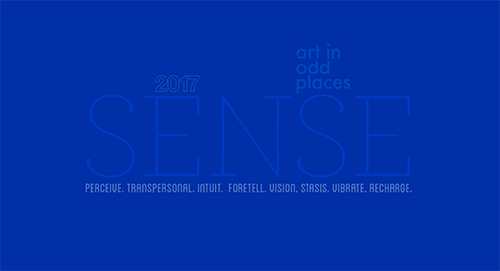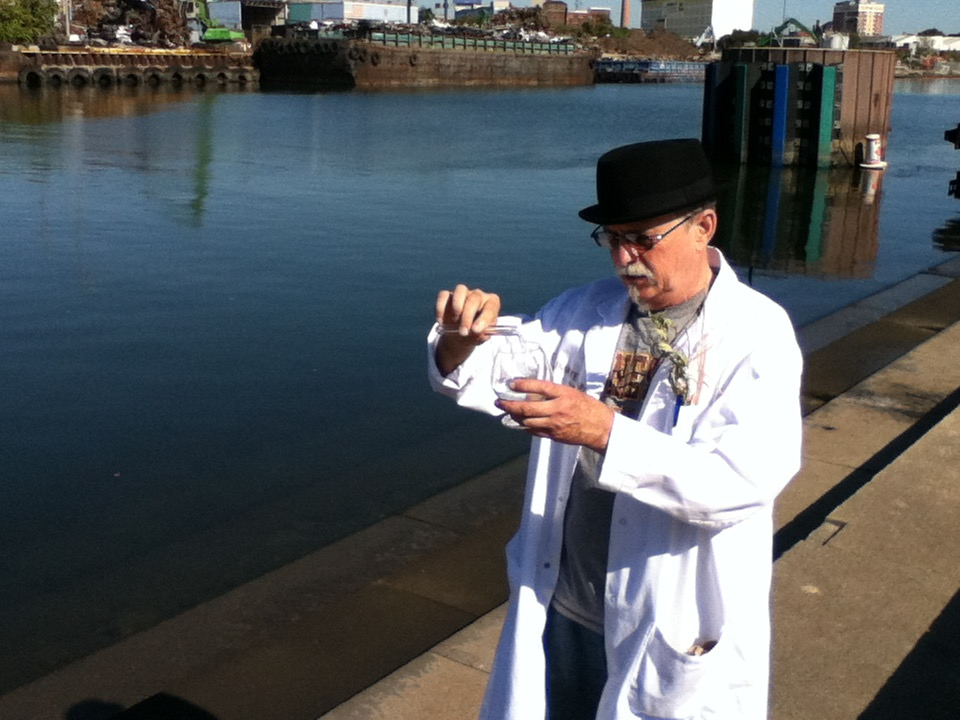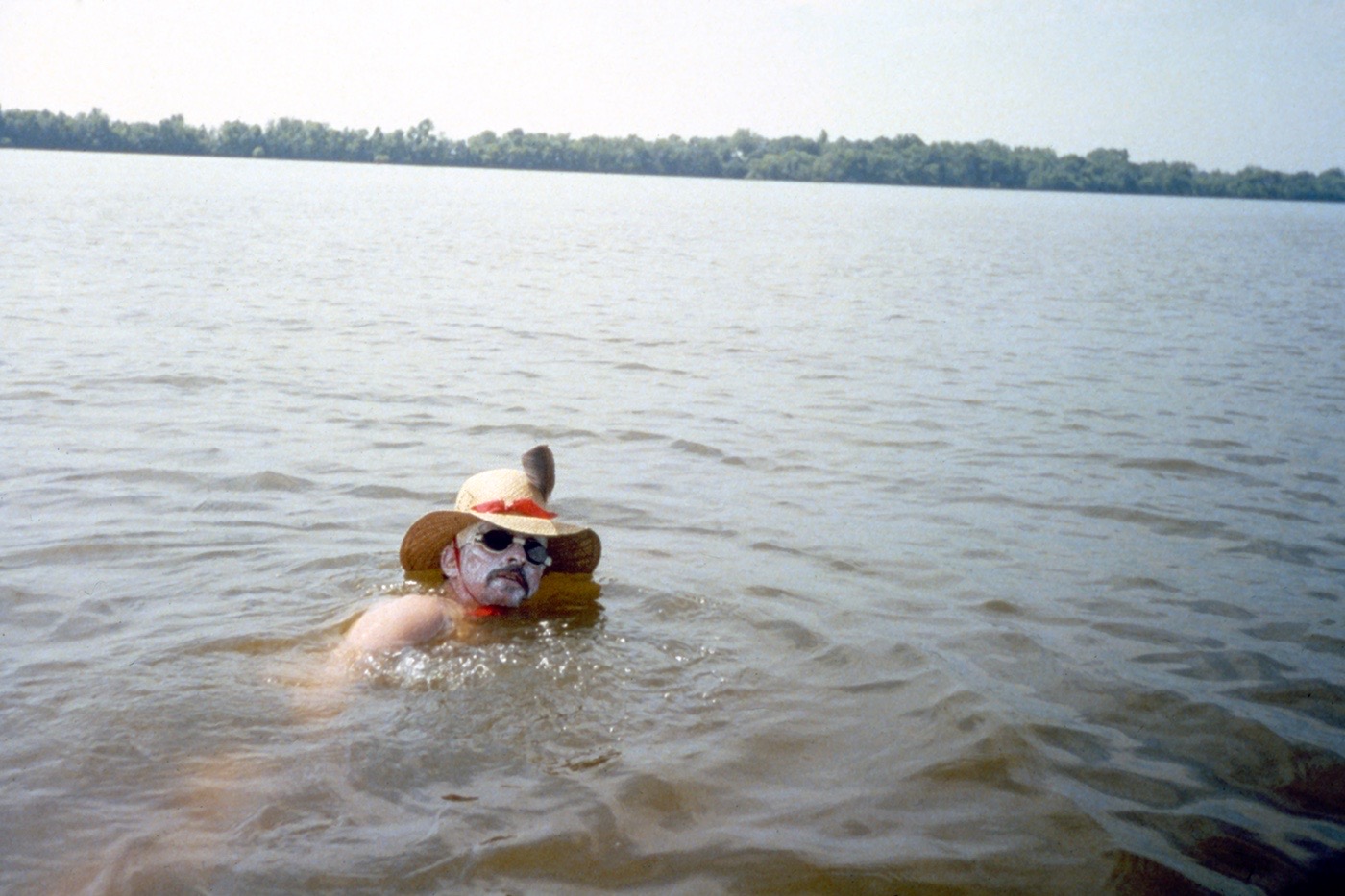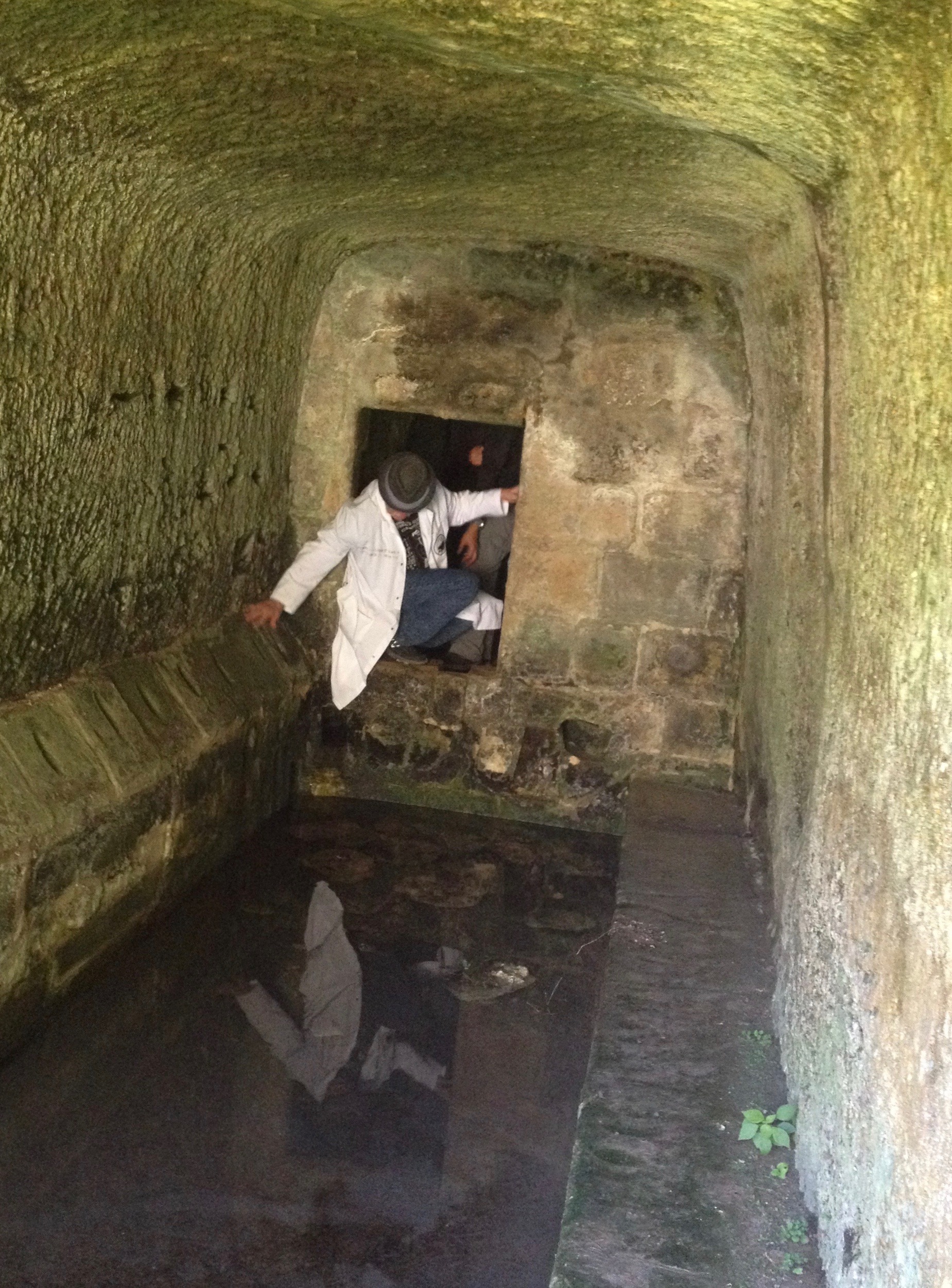A Conversation between Nicolás Dumit Estévez Raful and Billy X. Curmano – Oct. 2017

NDER: Billy, can you tell us about your upcoming performance for AiOP?
BXC: I’d be happy to, Nicolás. We’ve developed an expeditionary art adventure team to serve as “Ambassadors for Clean Water.” We will traverse 14th Street searching out water sources along, above, below – from and between the East and Hudson Rivers.
A touch of Dada will accompany our sculptural/acoustic roller-vessel as it sounds out a “Water is Life” mantra in over 100 languages as the mariners, Margarita Baumann, Bella Via, Dr. David Christenson and John Pendergast, collect data and create spectacle.
There will be solemn ceremonies at collection points during the critical masses and for the keynote performance. In the past, I’ve offered devotions to the natural world, but these AiOP ceremonies reflect back to morning rituals that helped guide and protect my length-wise Mississippi River Swim. I was asked – and honored – to perform that ritual after a Pipe Ceremony by elders from the Leech Lake Band of Ojibwe in Northern Minnesota.
In our final keynote performance, water from the first day of the Mississippi Swim will be joined with the collected NY waters in an ocean harp. Its strains will play to the cardinal directions accompanied by John Pendergast.

Newtown Creek Cleansing, NY, Photo: Margarita Baumann
NDER: Can you expand on your relationship with Earth, Fire, and Water in some of your previous work, and your intention to revisit Water in your action for AiOP in October 2017?
BXC: I’ve used Earth, Fire and Water as characters within my work.
I cling to Mother Earth as we hurtle through space and time. I’ve dug in her mud and formed objects in my hands. I worked as a tree planter. Time and again I commune with nature. I’ve slept on her ground – and underground. I was buried alive for 3-days after an Italian Wake, New Orleans style Jazz Funeral and along with a 7-day fast during a “Performance for the Dead.” The trappings were primarily for the living. Fasting, total isolation, absolute darkness and sensory deprivation brought me closer to the earth and spirit world than I had ever traveled before. I could feel her pain from the arrogance of my own species trampling our environment and using the earth, sea and sky as a repository for our waste.
Fire and water are powerful and photogenic.
Fire cooks our food, heats our homes and molds our steel, but when out of control – our friend becomes fiend – an absolute cleanser and destroyer.
I looked to fire for spiritual and psychological relief during the AIDS crisis. Variations of a “Performance with Dancing Flames” became my statements on the “Days Without Art.” The most memorable included an above ground primitive wooden burial platform near my gravesite and burial mound. It was adorned with bones, skulls and metallic elements with dry brush forming the “corpse.”.A dead rat was suspended at its center. I wore a bone facemask and proclaimed the virus as a rat amongst us, torched it, then prayed the rising flames would banish the virus from each of the cardinal directions.
Water is a source of life. Without water, there is no life, but then again – too much water takes life away. I remember Sandy and so much more.
During “Swimmin’ the River” a single form (my body) repeated in the landscape for thousands of miles. It was both performance and environmental statement. Swim strokes mimicked brushstrokes leaving impermanent trails that almost imperceptibly altered the river’s flow. I became intimate with the Mississippi during years of swimming, often struggling. The river became my lover. She sometimes beat me up – it was an abusive relationship – until I accepted her ultimate power. We became as one with a certain Zen – in the stroke – after stroke – ad infinitum. The river’s creatures accepted and guided me.
Locals joined with the volunteer support crews that followed the Swim. Everyone shared in the responsibilities, joys and dangers as we grew together. Diverse people learned and in turn taught about the river. As “Father of Waters” we realized its problems are mirrored to some degree in all the world’s waters. Spreading those concerns we became “Ambassadors for Clean Water.” We are continuing that mission as we revisit water for AiOP this October.

Swimmin’ the River, Mississippi River, Photo: Darlene Hlidek
NDER: The common relationship with Water that many of us have in the U.S. is that of a cheap, disposable “resource” that we take for granted. In New York State we are blessed with huge quantities of water. This is not the case in other places in our country, or in other parts of the world where people have to travel long distances to fetch a bucket of the precious liquid. What do you have to say about this?
BXC: These very ideas inspired the “Water Trilogy” about the abundance, absence and changing states of water – Abundance: swimming the Mississippi’s billions of gallons and thousands of miles; Absence: A 40-day juice and water fast in the Death Valley Desert and Changing States: An arctic circle odyssey as witness to Climate Change.
Ease of access often generates unsustainable usage. I was invited to the Island Nation of Malta to work with Marco Cremona, a world-class hydrologist, to help illuminate their serious water problems. Malta’s history includes the world’s first cisterns constructed to collect water. The Maltese have required cisterns on all new construction by law since early days. After the world’s largest desalination plant was built, cisterns sort of fell by the wayside while water usage increased. When more water is available, people use more. Two more plants were constructed, but usage just went up further. By European Union standards, the situation has been deemed unsustainable.
There is a Water Cycle. Surface and groundwater interconnect. The sun evaporates water and saturates the clouds. The rain falls to renew the cycle. But it’s the same water. Water is a finite resource. Imagine a world without water or one with water contaminated beyond repair. Gaining short-term profits at the expense of the planet, people and its creatures is a dangerous game. As “Ambassadors for Clean Water,” we’ve left the reminder, “Water is a source of life.” We stand with the “Water Protectors” of the Standing Rock Sioux and their rallying cry *Mni Wiconi (Water is Life).
*Lakota

Hidden Water Collection #4, Malta, Photo: Margarita Baumann
NDER: Do you have any personal stories about Water? I know you do and that is why I am asking! Mine is that of living in Santo Domingo, a large Caribbean City, in the 80s and dealing with water shortages that forced me to learn how to bathe, wash my hair and brush my teeth with just one gallon of water. I had no choice but to master this art one drop at a time.
BXC: I share your understanding down to that last singular drop. I lived in 2 farmhouses with wells and cisterns. I maintained the systems; the plumbing, electric and wind driven pumps and I had to shock the wells if they became contaminated. One well simply failed. I was forced to carry all my water from a town several miles away. I’ve gone on to share and help maintain a community well.
There was an earlier and darker time when I was totally without water. I was a teenager. Circumstances took me to war. I served as an infantry paratrooper. We carried all our water and other supplies on our backs – for weeks at a time. We ran out of water for several days. I was parched when I came upon a small, stagnant pool of dark, dark water with a smell of rotting vegetation. I dropped to my knees and drank heartily. The consequences were unpleasant.
NDER: War and Water? I keep reading and hearing about these words in relationship to each other and to our future? Any tips for disarming this panorama?
BXC: Oil isn’t necessary for life – water is – but since the fossil fuel age, Wars have been waged basically for oil. Imagine what happens as water resources become scarce. You can’t drink oil. Here’s a we must litany:
We must: protect the waters. We must: strengthen our resolve to attain zero discharge. We must: work to end our dependence on fossil fuels. We must: Get rid of fracking and other practices proven to threaten groundwater. We must: Stop transporting oil, gas and coal that have proven to spill and leak from pipelines, ships and trains. We must: Cut back on agricultural pesticides and run-off. We must: Learn to share resources. We must: Learn compassion and tolerance for other ideas. We must: We must: We must:
Perhaps, learning to share resources for the common good – could do some good. A little more caring, a little more sharing and a little less fighting over “pie in the sky when we die.”

Hidden Water Collection #3, Malta Photo: Margarita Baumann
NDER: Holy Water was part of my lexicon growing up Catholic in the Dominican Republic. I have now come to understand all Waters as Holy. There is a tendency in your work to treat Earth and gifts as Water with reverence and respect. Can you expand on this?
BXC: I too believe all water is holy, but I’m glad you mentioned it. I hope to receive some from Santuario de Ntra. Señora de Guadalupe En San Bernardo (Our Lady of Guadalupe at St. Bernard) on 14th St. I plan to mix it with the same reverence applied to the other collected waters.
I am awed by the natural world. I believe I become a better human being by spending time in it. There is an ever increasing human capacity to change and alter this world – often only for short-term gains. I am hopeful others and especially future generations will still be able to experience it – to walk a forest path or swim in a lake or river – maybe even have the fishies play tickle with their toes.
When I hear a phrase like woman or man versus nature, it seems a misconception. We are a part of nature. Mountains aren’t “conquered” by climbing them. They remain long after the climbers are gone. By the same token, I know the Mississippi will still be – long after me. I was very careful to say I was attempting to – rather than going to – swim the river. The Swim metaphor stressed my fragility in a tenuous environment often callously manipulated for industry and transportation. I hoped it would make people think. Europeans claimed the Americas by crossing the Atlantic and posting flags. I wanted to claim the river for life affirming pursuits by swimming its length under the banner of art.
NDER: I thank YOU, as well as artists like Elizabeth Stephens, Annie Sprinkle, Rachel Rosenthal, Mary Ting, and Lissette Olivares, among many others, for the work that you are doing to bring awareness to the ecology and to the creatures with whom we are called to share the amazing Earth. Is there anything that you would like to say to close this conversation?
BXC: I am honored to serve as the Keynote for this incarnation of Art in Odd Places. I think of you and all the other artists and the just plain folks working to enlighten us as my allies. May we find a path to a peaceful world in harmony with the cosmos. Here’s a little something from the “River Rap” to go out on:
Fourth of July; Freedom and such
Yankee Doodle and all that stuff
Let me say explicitly without freedom from toxicity
We ain’t got much.
Billy X. Curmano is known for extended performances like a 3-day live burial, 2,367.4-mile Mississippi swim, and 40-day desert fast all with serious environmental and social justice underpinnings tempered by irony and satire. An amused Journalist dubbed him, “The Court Jester of Southeastern Minnesota.”
Nicolás Dumit Estévez Raful follows an elusive path that manifests itself performatively or through experiences where the quotidian and art overlap. He has exhibited and performed extensively in the U.S. as well as internationally. Residencies attended include P.S. 1/MoMA, Yaddo, and the MacDowell Colony. Estévez Raful has curated exhibitions for El Museo del Barrio; the Institute for Art, Religion and Social Justice at Union Theological Seminary; Cuchifritos; the Center for Book Arts; and Longwood Art Gallery/BCA, New York; and for the Filmoteca de Andalucía, Córdoba, Spain. Born in in Dominican Republic, in 2011 Estévez Raful was baptized as a Bronxite.

